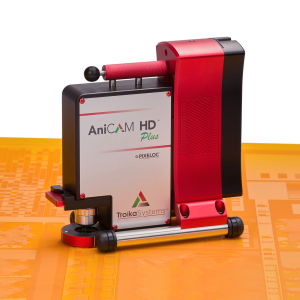Waste in the sustainability Equation
In a recent study conducted throughout the converting industry, both converters themselves, and their key suppliers were asked “What keeps you
up at night?”. Whilst numerous concerns around economy, labour, and perceptions relating to plastics were all cited, the issue of sustainability featured in both groups’ top three concerns for the future.
 A lot has been written about sustainability and the subject encompasses many areas of business. It is however in the area of waste reduction,
A lot has been written about sustainability and the subject encompasses many areas of business. It is however in the area of waste reduction,
particularly plastic substrates and ink compounds, that much focus will fall. Waste reduction is not only a key element of ongoing profitability, but
waste created in the primary converting process significantly impacts upon the legitimacy of our claims to sustainability.
Make-ready-waste is an unfortunate byproduct of flexographic printing. We would all agree that it’s an accepted norm and unavoidable outcome
of press setups, but why does the waste generated during setup have to be so high? It’s typical in our industry to create several hundred metres of
wasted substrate and inks for every setup change.
SO, WHERE DOES THIS MAKE-READY-WASTE COME FROM, AND HOW CAN WE REDUCE IT?
 When setting up a job on press the user will calculate the ink values required to achieve a specific colour density. These ink value calculations
When setting up a job on press the user will calculate the ink values required to achieve a specific colour density. These ink value calculations
are done according to a quoted anilox volume or against an ink-proofer roll. Whether this calculation is done manually using a software-based ink
calculator, or by gut feel and experience of the operator, the calculation relies heavily on knowing the exact volume of your specific anilox on press.
All too often the ink calculation is done on an assumed anilox volume, followed by a pull done to assess the colour density on the press, and then
adjustments made to the ink formula. The industry norm is for press operators to require anything from 3-5 pulls for each setup change before colour densities are correct. With press speed of up to 800m per minute, a significant amount of wasted substrate and ink ends up in the
bin, taking away from your bottom line.
There is a simple solution; knowing the specific volume of the anilox on press at the time of that setup. This is the only way to be sure of delivering
the required ink volume and hitting density targets.
HOW CAN THE PRINTER ACHIEVE THIS?
 In any methodology used to improve business processes and reduce costs, there is a critical need to measure; as we say, “if you can’t measure it, you
In any methodology used to improve business processes and reduce costs, there is a critical need to measure; as we say, “if you can’t measure it, you
can’t control it”. To correctly calculate ink values first time, every time, one needs to assess and measure the volume of the anilox at hand. To rely on, and assume the labelled volume of the anilox, is to assume that no wear has occurred in the past, the roll is clean, and no damage or ceramic cracking.
Electronic measurement and microscopic graphical assessments are the natural solution.
However, a simple handheld microscope provides a poor indication of volumetric measurement of the roller being used. Bearing in mind that variations in anilox volumes as low as 0.4 CM3 will create colour differentials as high as 3ΔE, electronic measurement remains the only means
of accurate anilox measurement.
Troika Systems Limited have been developing such high precision anilox measurement devices for over 25 years, leading the way in providing accurate anilox volumetric readings. We have addressed process standardisation challenges by developing the AniCAM HD+, doing all the hard work for the user. It requires little intervention by the operator and makes for ongoing and consistent setup processes.
In terms of sustainability, users of Troika’s AniCAM typically improve their first-time ready setup rate from the industry norm of 60% to a rewarding 90%. The benefits in terms of Make-Ready-Waste provide the user with very attractive returns on their investment in an AniCAM HD+.
This benefit of process improvement and cost saving is enhanced by Troika’s AMS software, a comprehensive Anilox Inventory Management tool. This allows the user to track every measurement done at setup, monitor the wear rate of the anilox, schedule replacements, and correlate anilox measurement with setup changes and introduce KPI targets.
Troika Systems Limited and their AniCAM HD+ are the trusted Sustainability Partner to the Converter industry.

